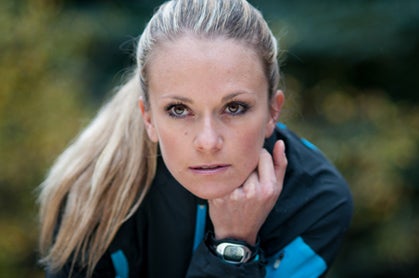A Puzzling Approach

Learn to develop a training plan
Developing a training plan for a race or an entire season is much like working a jigsaw puzzle. …
Photo by Randall Tate
Developing a training plan for a race or an entire season is much like working a jigsaw puzzle. Dumping out a box of tiny pieces that initially all look the same can provoke a daunting question: Where do I begin?
When I was younger, my dad and I would frequently work jigsaw puzzles together. He taught me to first look for the corner pieces, which was sometimes easier said than done—especially with a 5000-piece puzzle.
The key elements of a successful and purposeful training plan are just like the corner pieces of a jigsaw puzzle. Through my experiences as a running coach and elite runner, I’ve identified four training “corner pieces” that will help you to develop reliable and predictable performances: simulation, effort, consistency and lifestyle.
Over my next few columns, I will explain each puzzle piece and how it fits into a comprehensive training plan. The corner pieces are not groundbreaking findings—they are simply tried-and-true training techniques that will help you achieve running success when interlocked.
The First Corner Piece: Simulation
In order to optimize your racing experience, your training should mimic the course you will encounter and the race goals you plan to accomplish. In other words, if you want to run a trail marathon, you’re not going to have the same experience if your preparation includes jumping into a handful of 5K road races and hoping for the best, than if you were to implement a few 15- to 20-mile progression runs on terrain similar to the race you intend to enter.
My client Heather Kroeger of Saint Louis, Missouri, attributes this approach to success at her first marathon: “It helped me to get a Boston [Marathon] qualifying time even though I had never run a full marathon.”
When I was training for the 2010 U.S. Mountain Running Championships, which took place at New Hampshire’s Mount Washington Road Race, I structured my entire build-up around running fast uphill. My goal was to qualify for Team USA, which meant I needed to secure one of the top four coveted women’s spots in order to travel to Slovenia for the World Championships.
Knowing the entire course would be all uphill on a paved road and climb 4650 feet from start to finish at a 12-percent average grade, I put trail running on the back burner and focused on a combination of long, uphill tempo runs, ranging from 800 meters to 3200 meters all on paved roads.
In addition to simulating the course in your training, it’s also important to mimic your typical race-day routine. This encompasses external factors, including fuel, weather, clothing, navigating a crowded field, etc.
For example, if you’re training for a marathon, practice drinking the same fuel the race will provide (unless you plan to carry your own) at the very intervals you plan to eat or drink during the race so you know ahead of time what will agree (or disagree) with your digestive system. This consistency also trains your body to know when to expect to receive fuel and when not to expect it.
In preparation for any race longer than a half marathon, I always schedule a “trial run” for my clients where they practice everything they might encounter on race day. I typically ask them to run 70- to 80-percent of the race distance on a similar course, at the same time of day the race will be held, in the same typical weather conditions (if feasible). Additionally, I ask them to wear the same clothes they plan to race in so they can be aware of any discomforts (chaffing, rubbing, tightness, looseness, etc.) in order to allow ample time to make any necessary changes before race day arrives.
Another client, Lauren Burtard, of Basalt, Colorado, recounts her experience preparing for a winter uphill race: “Megan’s training plan was challenging and practical as she had me do the majority of my workouts on the same course I raced. The day of my race, I felt the best prepared I had ever been. I had a course PR of 15 minutes!”
The more closely you can simulate specific conditions you could potentially encounter on race day within your everyday training routine, the more tools you will have to dictate wise racing decisions before you even go to the start line.
Megan Lizotte is a decorated elite distance runner and online running coach at www.hgrunning.com. She is a three-time World Mountain Running Championships competitor, two-time Olympic Marathon Trials qualifier and 2011 USATF Trail Marathon Champion.